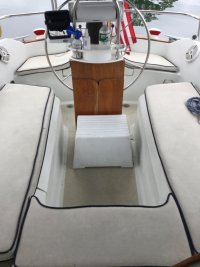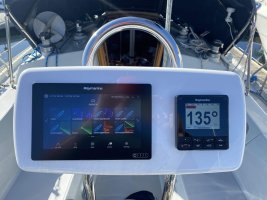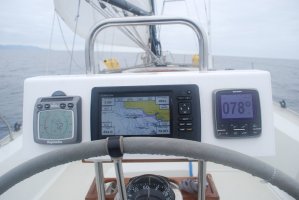dhill
Member III
I've started considering a replacement for my current Raymarine a65 multi-function display (MFD). My main objection is that there does not seem to be a night mode. I've checked the manual, but this seems to be a feature that was added later to Raymarine MFDs. I'm happy to be proven wrong.
Something a little bigger might be nice too. I've been looking at B&G Vulcan R units and there is a 9" and 12" model (in addition to the 7" - similar in size to what I have now). Bigger means greater resolution - 1280 x 800 for the 12" and 800 x 480 for the 9" - which is a pretty big difference between the two units. The 12" consumes twice the power of the 9" (24w vs 12w nominally). I do have 350 watts of solar panels, however, which helps with power generation. Deals on the 12" right now make it equivalent in price to the 9" display, so cost is not a factor at the moment.
Is 12" too large? Functionally the two units are the same. The B&G Zeus3 9" has almost the same resolution as the Vulcan 12R, but is more than double the Vulcan 12R deal price. Anyone out there with a 9" display that wishes it were larger? Anyone have a 12" display they wish were smaller?
Thanks!
Dave
Something a little bigger might be nice too. I've been looking at B&G Vulcan R units and there is a 9" and 12" model (in addition to the 7" - similar in size to what I have now). Bigger means greater resolution - 1280 x 800 for the 12" and 800 x 480 for the 9" - which is a pretty big difference between the two units. The 12" consumes twice the power of the 9" (24w vs 12w nominally). I do have 350 watts of solar panels, however, which helps with power generation. Deals on the 12" right now make it equivalent in price to the 9" display, so cost is not a factor at the moment.
Is 12" too large? Functionally the two units are the same. The B&G Zeus3 9" has almost the same resolution as the Vulcan 12R, but is more than double the Vulcan 12R deal price. Anyone out there with a 9" display that wishes it were larger? Anyone have a 12" display they wish were smaller?
Thanks!
Dave
Last edited:




